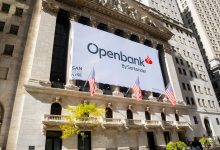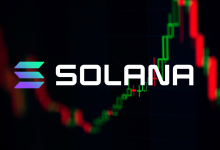AI Chats and MCP Servers Are Changing The Way Traders Behave


The digital transformation sweeping across the fintech sector is further exposing why brokerages tethered to legacy trading interfaces are teetering on the edge of obsolescence.
While the majority of the technology industries operating in other sectors outside of the electronic trading industry have been delivering intuitive, adaptable user experiences in banking, retail, automotive and travel, many ‘tradfi’ (to use a crypto-style term) trading firms remain hamstrung by outdated platforms and rigid architectures without the possibility of being able to operate in the modern realm. The mere fact that crypto companies call other assets ‘trad’ is telling in itself.
Now it is clear that AI chat interfaces and MCP (Model Context Protocol) servers are becoming part of the structure within trading systems.
From Command Lines to Conversational Trading
Until recently, execution on most brokerage platforms required manual order entry, complex interface navigation, and a steep learning curve for both retail and even professional traders.
Today, firms like Alpaca are rewriting those rules. Alpaca, which could be viewed as a developer-first brokerage,with AI agents built on ChatGPT, Zapier, and other conversational platforms to interpret natural language trading commands.
Traders can just think “purchase 100 shares of AAPL if Nvidia drops 3% on earnings” and instantly route them through via API connection.
As desktop computers become more obsolete and mobile devices with voice command functionality are now part of the everyday life of almost everyone, it is entirely possible that traders may, for example, be driving and hear some news on the radio and want to execute a trade based on it, and therefore could just press the voice button on the steering wheel and state what position they want to open or close there and then without having to stop and boot up a computer and log into a platform and go through the layers of procedures to get a trade executed.
Companies which are now able to include new ways of interacting with the markets and executing trades such as by using voice/text-driven trading will likely foment the route hobbyists who are not professional programmers and have no background in algo coding to automate trades, research stocks, and rebalance portfolios which are things that would ordinarily require a substantial amount of technical expertise, and in some cases may not be possible even with such expertise due to the limitations of many off-the-shelf front end interfaces.
I have noticed recently that many brokerages have completed integrations with Alpaca, meaning that these brokers will need to be free from closed systems that don’t allow such integrations in order to be part of the transition to AI-driven trading which is now the subject of a lot of investment among more modern firms in other areas of fintech, especially within the crypto world which is where most of the cutting edge developments are coming from.
The tradfi sector is now in such a position that many reasonably large companies that have been established for two decades or more are unable to move themselves forward the way that some of the crypto platforms have done in terms of forward-thinking technology and are now an acquisition target for crypto firms which are established for less than half the time but are much largeger due to their ability to engage a massive audience with intuitive tech.
The Role of MCP Servers: Speed, Security, and Scalability
Coinbase, for instance, has deployed MCP servers to unify fragmented APIs, allowing its AI-powered assistants to execute transactions, organize workflows, and interact with blockchain networks via a centralized, secure hub. This architecture reduces integration costs and makes the developer experience highly intuitive.
MCP servers also power real-time analytics, fraud detection, and personalized wealth management in an efficient manner.
Interestingly, in February this year, Finastra launched Assist.AI, a ChatGPT-powered chatbot atop Microsoft Azure to answer trade finance questions and guide both professionals and newcomers through complex instruments.
Zenith Bank, founded by Mushegh Tovmasyan, a very experienced FX industry leader who had held senior positions at Alpari and Divisa Capital (now Equiti) has a chatbot called ZiVA which delivers 24/7 account management and transaction support directly within its ecosystem, including a WhatsApp number.
Community-driven platforms and open frameworks allow multi-agent trading bots to analyze news, social sentiment, company fundamentals, and execute trades with risk management all coordinated through MCP servers.
Why Traditional Brokerages Must Change Or Be Left Behind
Particularly over the past few months, the level of development resources committed toward building ‘AI Agent-ready’ trading infrastructure. There are some current initiatives in progress in which AI agents that are verifiable, trustless, and open are viewed as the way to revolutionize how interactions with customers take place and are handled from beginning of query to reanswer.
The Crypto Valley project in Zug, Switzerland was the first environment in which the L2 blockchain can be used to engender security and on-chain privacy for not just digital platforms but any asset class. I oversaw some hackathons in which young developers put forward their designs to this nature.
Some time has passed since, and whilst three years ago these were prototypes, now some have come to fruition and could change the way trading infrastructure is approached in every respect.
One such example is TRUE Trading Platform, which was founded in July year by NAGA founder Ben Bilski. At the time of launch, it was lauded as an ‘AI native’ decentralized platform. It is clear that other projects are currently in development. A quick talk to some acquaintances who are tech VC partners recently was enough to understand that such projects are attracting support.
‘AI native’ is a moniker which explains a lot – that trading infrastructure is beginning to have AI at its core, and as a USP. Whilst this particular project is part of the DEX (Digital platform) world, and is perhaps one of the most recent iterations of this type of technology, it was founded by a senior executive from the traditional electronic trading sector.
The development of this type of trustless and distributed on-chain architecture is now common within DeFi beginups, however that is where the majority of the influences that filter to the traditional brokerage sector come from, and ultimately where many traders will come from and in doing so will expect a similar trading environment.
In the case of the TRUE platform, AI is deeply integrated into its user interface by offering two modes of interaction, one being a traditional chart-based view and the other is an AI-driven conversational interface.
Standardized API interface may may pave the way for user-derived front ends
Last week, I mentioned that it is entirely possible that traders may move away from bringing affiliate networks to existing front end trading platforms and simply opening accounts, toward asking for an API connection to be able to connect their own self-developed platform to a broker’s back end and liquidity/order management system. This may become more possible with the advancement of MCP servers within trading systems.
 MCP servers are beginning to emerge as a transformative force by providing a standardized, API-driven interface between trading systems and external applications. Rather than requiring brokers, platforms, and automated trading agents to build custom integrations for every proprietary API, the MCP server introduces a universal protocol that translates complex trading functions like order placement, market data retrieval, and portfolio management into a predictable structure that any client can access.
MCP servers are beginning to emerge as a transformative force by providing a standardized, API-driven interface between trading systems and external applications. Rather than requiring brokers, platforms, and automated trading agents to build custom integrations for every proprietary API, the MCP server introduces a universal protocol that translates complex trading functions like order placement, market data retrieval, and portfolio management into a predictable structure that any client can access.
As a combination, MCP servers provide a unified way for AI systems to access multiple data sources and execute complex workflows reliably, removing friction caused by disparate APIs. As traders become more aware that they can execute sophisticated strategies seamlessly, adapt rapidly to market changes, and reduce errors without manual intervention, brokers without such infrastructure risk losing clients who demand intelligent, efficient, and scalable trading tools.If a broker is able to produce a far more trustworthy trading environment than others, as well as do it for cheaper than most, such a broker will have a massive advantage, especially considering the inability for many firms to emulate such a model if they are constrained by total reliance on .
Additionally, the streamlining of tasks such as risk management, KYC, and payment flows could serve to keep the cost of operation down (and potentially pass this onto customers), and maintain an advantage in the face of increasing regulation and also-ran competition.
Why does the status quo persist? Why are so many brokerages still bound by legacy tech?
Often it’s risk aversion, vendor lock-in, or organizational inertia. Legacy systems underpin decades-old custom workflows and in some cases there is concern that migration projects can be risky, expensive, and complex.
Change threatens to expose undocumented dependencies and disrupt daily operations but nowadays it is clear that such concerns now pose a greater risk because sluggish-moving firms struggle to attract new clients, frustrate existing users, and fail to keep pace with innovation coming from newer fintech challengers, especially given that the younger generation of internet users do not use apps or interact with information – financial or otherwise – the way many legacy platforms provide it. It’s quite impossible to conceive that a 20-year old tech-savvy student would use a that are now fully electronic and dominated by massive digital platforms that have changed the entire face of the financial services world globally.
In today’s trading environment, intuitive user experience is no longer a nice-to-have, it’s a competitive necessity. MCP servers and AI-driven interfaces are empowering brokers to develop bespoke answers, accelerate product launches, and scale securely, without being held back by old code and cumbersome architecture.
Modern a new standard by harnessing AI chats and MCP servers not only for speed and efficiency, but for radically improved user experience and business agility.
If brokerages want to remain relevant and have the ability to attract tomorrow’s traders and build new revenue streams they must shed legacy constraints and choose tech infrastructure that allows them to keep pace with such changes on an ongoing basis.







